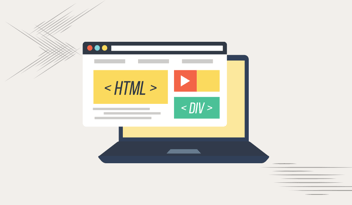Your website plays a key role in your business. It’s your digital storefront and an integral part of your marketing strategy. An effective website helps you drive more traffic, convert more leads, and move your business forward. It can even incorporate automation that makes your products or services readily available to customers.
Effective website design requires a focus on user experience. User experience (UX) design is how a user interacts with and experiences a product, system or service.
As technology rapidly advances and the number of new websites and apps continuously increases, user experience has become more important than ever before. With over 200 million active websites on the internet and over 250,000 more created every day, optimizing your website for a seamless user experience can help your site stand out. Here are some of the UX trends to consider in 2022.
Personalized experience
Curated recommendations from your favorite platforms such as Netflix, Instagram, or Spotify are a few examples of hyper-personalization. Websites and apps are collecting more information about user behavior, allowing them to create a much more personalized experience.
A website or CMS platform such as HubSpot can achieve this with a feature called smart content. Smart content modules display different versions of your website page content based on user category. HubSpot offers an array of categories on which you can base a smart rule: ad source, country, device type, referral source, preferred language, contact list membership, lifecycle stage, and query parameter. Not only does this allow you to provide a more personalized experience for your site visitors, but it also enables you to conduct segment analytics, providing benefits for both your business and your audience.
Responsiveness
Responsive web design is not a new concept. It started emerging as a trend around 2010, but it remains a vitally important part of UX design. Mobile use is only expected to increase, and mobile traffic may soon comprise the vast majority of all website visits.
Designing for different screen sizes, devices, and web browsers is challenging. By designing and prototyping your website for mobile devices before launch, you can ensure that your users’ experience is seamless on any device. With this mobile-first mindset, you can create greater overall consistency and more positive experiences.
Minimalism
If you look at some of the best known brands out there, you’ll notice a strong preference for simple and informative layouts. A clutter-free approach may seem bare, but it can enhance user experience. Users can become overwhelmed and leave when bombarded with information—especially if it includes ads and pop-ups. Taking a minimalist approach requires the designer to be selective to keep things simple and streamlined. Consider what content your audience is more likely to scan than read fully, and pare it down and/or relocate it in your site structure as appropriate.
Motion
Motion graphics are becoming more popular in UI/UX design, especially with user interaction of UI components. Users can now interact with website and apps that can evoke a feeling of interconnectedness and add a wow factor. Features like animated user interface components, icons, and illustrations can give more meaning to the user experience by highlighting relationships between elements, actions, and action outcomes. Motion can also be used to enhance focus by emphasizing what is important while avoiding distraction.
Motion can add expressiveness to your user interactions. You can use motion to celebrate moments in a user’s journey in a way that adds character and meaning while enhancing your brand’s overall aesthetic and voice. Motion in elements like transitions and hover effects can add a tone that matches the desired look and feel. Icons and illustration animations add a subtle playfulness for the user and can reinforce the icon’s meaning as well as add polish and an extra moment of delight.
Color
Your choice of color will evoke an emotional response and should reflect your brand’s personality. There are many factors to consider when making color decisions, such as consistency, sufficient color contrast to distinguish between elements, and the way shapes work with the color scheme. Color can be a powerful visual cue to grab your visitors’ attention and make them feel a certain way. For example, red is known to increase appetite and is often used for food packaging and restaurants. By using color strategically, you can build trust and conversions.
Accessibility
Are you aware that you could be sued for not offering adequate accessibility on your website or app? More digital platforms are putting a focus on accessibility standards, not only to be compliant but also because it’s simply the right thing to do. Look at the Web Content Accessibility Guides to learn more and find out if your website meets accessibility standards.
Large typography
Using large typography is one of the easiest ways to grab attention. The trend on the web is toward bigger and bolder typography, especially for landing pages and microsites. Bold type stands out and demands to be read, but it should be an integrated part of your site’s overall aesthetic. It looks like large and bold typography is here to stay with a straightforward and proactive approach. Popular websites are adopting this technique and will continue to grow in 2022.
There are many variables to consider when crafting an exceptional user experience. Effective UX design requires attention to market research, usability testing, user interface design, accessibility, and more. A visitor is on your site with a mission, and it’s up to you to help them accomplish it. Looking for more insight on web design? Schedule a consultation today!



